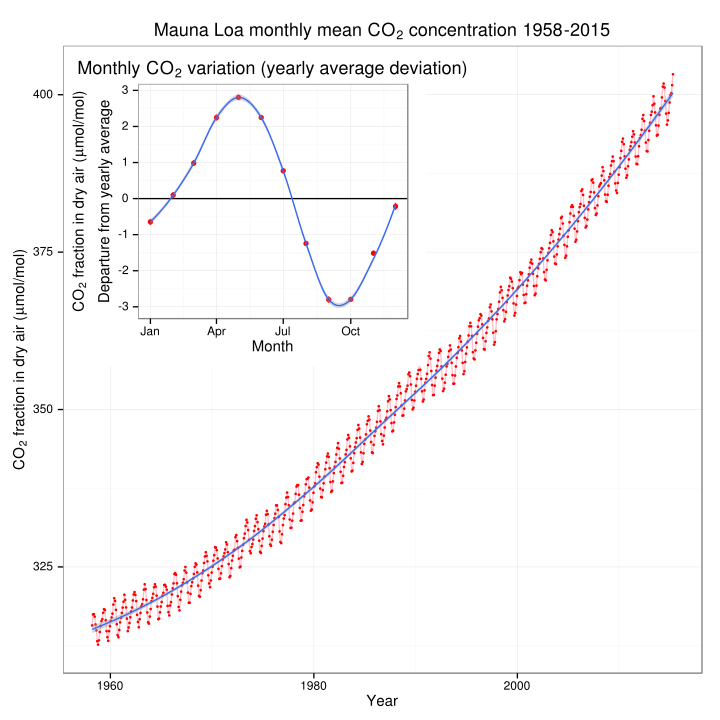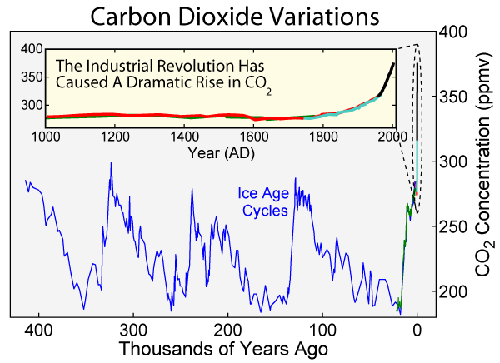Yo que sé. Ni lo he miradoAdrenocromo, no?

Follow along with the video below to see how to install our site as a web app on your home screen.
Se debe tener en cuenta: This feature may not be available in some browsers.
Yo que sé. Ni lo he miradoAdrenocromo, no?

¿¿¿Ah, sí??? ¡Pues los tuyos...!Ah! Qué lo dice la Wikipedia...Ah! Y también "La Vanguardia", y espera, que también lo dice el diario "El mundo"!
Los mismos que dicen esto:
Diario El Mundo, el mismo que en 2007 (Ya han pasado unos añitos) decía esto:
Se acerca el desastre del cambio climático | elmundo.es
Diario La Vanguardia, el mismo que también en 2007 decía esto:
Los desastres naturales se cuadruplican en veinte años a causa del cambio climático
Estamos en el año 2023...Deberíamos ya estar muertos no? DIECISEIS AÑOS HAN PASADO!
O sea que el catastrofismo que dan este tipo de medios para tí no es "basura digital".Ya, ya....y estos para ti son fiables...claro.
Efectivamente!... Habría que ver lo huntaditos que están todos estos medios y "científicos" que promueven todo esto.
Y por cierto LoJaume, lo que afirma Luis Pomar también es basura digital....verdad?


Esto también es unno veo mucha diferencia entre recibir dinero de una tabacalera a recibirlo de un gobierno.
 ¿eh?
¿eh?@thundered mantis
Yo te dejo estos artículos que explican de una manera bastante sencilla la evidencia científica de por qué no hay otra opción y el cambio tiene que ser debido a razones antropogénicas:
Naukas - El calentamiento global y la falacia negacionista (parte 1) - Naukas
Naukas - El Calentamiento global y la falacia negacionista (parte 2) - Naukas
Naukas - El Calentamiento global y la falacia negacionista (parte 3) - Naukas
Son la mejor explicación que he visto hasta ahora.


Me he limitado a contestar exactamente como ha contestado el, desacreditando las fuentes.El empezó, no yo.¿¿¿Ah, sí??? ¡Pues los tuyos...!
Que me han enseñado que mis fuentes son una mierda, ¡rápido, desacreditemos las suyas!
Este es el nivel de todo el post.
Pero de comentar que hay documentos oficiales que demuestran que el que niega el cambio climático recibía dinero de las petroleras no, no vaya a ser que...
En fin.
En el vídeo de Luis Pomar que expuse te rebate todo esto magistralmente.Y es toda una autoridad en lo que habla.Pero para enterarse hay que verlo claro.Esto también es un¿eh?
La cuestión es si recibir dinero de las petroleras tiene alguna influencia en defender la postura que les beneficia.
Porque sobre si el cambio climático es antropogénico o no ya hay en el hilo un artículo de un meteorólogo de la AEMET (esa que se cita como fiable cuando "desmiente lo que dice el gobierno" pero que para esto no parece ser tan fiable) que estoy esperando que alguien rebata con algo más que "se basa en parámetros del ICCP" o "está en una web con humor y que vende camisetas".
Obviamente me parecería bien que me dijeran en qué exactamente están mal esos parámetros que vienen del ICCP, pero solo se ha limitado a decir esa frase, como si eso quisiera decir algo. Yo lo que quiero es que me rebatan los datos, no que se critique la fuente (creo que se ve claramente la falacia).
Me gustaría que te leyeras los artículos y dieras tu opinión.
Me gustaría que te leyeras los artículos y dieras tu opinión.

Claro, es lo mismo que el dato lo des tú que lo de el.Ya, ya.No son autoridades, son los datos.
Efectivamente! Y aún no sabemos realmente hasta que punto! Sólo ha salido la punta del iceberg.Pero nadie quiere acordarse y mucho menos reconocerlo.la misma gentuza que nos mintió y manipuló hace tres años, con ayuda de los científicos, con el tema de la pandemia, vuelva a hacerlo con este tema me parece obvio.
Pero es que los que defienden la teoría antopogénica del cambio climático no son la inmensa mayoría de los científicos como se está haciendo creer, sino exclusivamente los del IPCC y asociados.
Y el problema por un lado es que los medios solo dan voz a ellos y no se permite siquiera un debate científico,.lo cual ya tendría que hacer sospechar bastante.
Y por otro lado si dependes de una financiación o quieres avanzar en tu carrera si te posicionas en contra de las tesis oficiales te hunden, y esto se ha visto sobradamente por ejemplo en el caso de los médicos con los colegiados de médicos con el Covid (y no sólo con el Covid).Unos cobran directamente, y otros no se atreven a posicionarse en contra por miedo a perder sus carreras, tener sanciones o simplemente perder su financiación.


Si claro, a eso deberían de dedicarse.Y los colegiados médicos deberían de dedicarse a hacer prevalecer la ciencia médica por encima de todo.Pero la realidad es que todo médico que discrepara de lo que decían la autoridades sanitarias sobre el Covid era suspendido o expedientado.Otros eran tachados de "Negacionistas" y no, no se les permitía ni hablar.No, no se permite el debate científico, ni mucho menos, y mucho menos aún en los medios.Lo que no entiendo es ¿dónde se prohibe el debate científico? Precisamente a eso se dedican los científicos.
Si es verdad.No es verdad.

Hablando del "Consenso" científico acerca del cambio climático Antropogénico, aquí tenemos a la Climatóloga Estadounidense Judith A. Curry , exdirectora durante más de una decada de la Escuela de Tierra y Ciencias Atmosféricas en el instituto tecnológico de Georgia y miembro del comité de Estudios del Clima del Consejo de Investigaciones Nacionales.Pues bien, ella explica en este vídeo la naturaleza real de ese "consenso" que tratan de hacer creer sobre esta cuestión:
No amigo LoJaume, según la RAE (No la Wikipedia, la RAE) "Consenso" significa exactamente esto:Es que "consenso" no significa "unanimidad", amigo Vanland. Significa más o menos "inmensa mayoría".
Vuelves a equivocarte amigo LoJaume...Y esa climatóloga es un ejemplo de los que discrepan, quien, por cierto, no dice que "el cambio climático es una farsa" -que es lo que dices tú-
Reitero, Luis Pomar (y otros muchos) te lo demuestran con datos empíricos.no describe la interacción de ellas con el calentamiento global como sí se ha hecho con los gases de efecto invernadero.
No amigo LoJaume, según la RAE (No la Wikipedia, la RAE) "Consenso" significa exactamente esto:
"Acuerdo producido por consentimiento entre TODOS los miembros de un grupo o entre varios grupos."
consenso | Diccionario de la lengua española



¡Seño, ha sido él!El empezó, no yo.
 Venga, hombre...
Venga, hombre...¿Dónde está el vídeo? Lo he buscado y no lo he encontrado. Sólo he visto un artículo del Heraldo repetido varias veces, y era muy vago, no había ningún dato.En el vídeo de Luis Pomar que expuse te rebate todo esto magistralmente.Y es toda una autoridad en lo que habla.Pero para enterarse hay que verlo claro.lo que quiero es que me rebatan los datos
